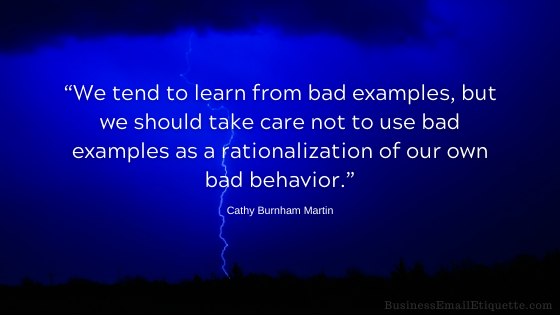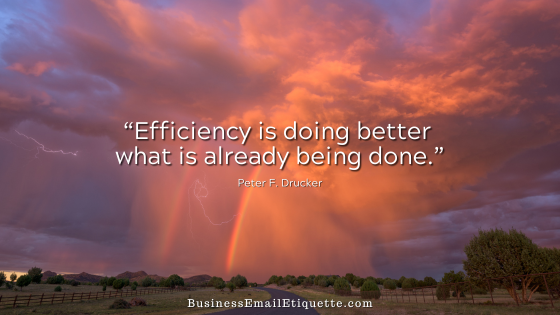Why Business Email Etiquette is Often Underestimated—and Why That Needs to Change

In today’s fast-paced business world, email remains one of the most commonly used communication tools. Despite the rise of messaging apps, project management platforms, and virtual meetings, email remains the go-to method for formal and semi-formal business communication.
Yet, surprisingly, business email etiquette is often underestimated and ignored, leading to misunderstandings, lost opportunities, and a lack of professionalism. Primarily because the sender did not take business email etiquette seriously enough.
This oversight or underestimation can have a profound impact on how a person or an entire organization is perceived. Let’s explore why email etiquette tends to be overlooked and why it’s more important than ever to pay attention to it.
The Misconception: Email is Informal
One of the main reasons business email etiquette is neglected is because of a widespread misconception: people assume email is inherently casual. Unlike traditional letters, emails don’t require physical effort, postage, or the same degree of formality, which leads many to treat them like text messages.
This can be a fatal mistake for any business’s branding image.
A relaxed approach can cause significant damage in a professional setting. An overly casual tone, poor grammar, or vague subject lines can easily be interpreted as careless or unprofessional.
In reality, email—especially in the business world—should carry the same weight and attention to detail as any other professional correspondence. If you’re a regular reader, you’ve probably seen me mention that you should assume every email is on professional business letterhead. If you would do or say something on company letterhead, don’t do it in a business email.
The Speed of Business Communication
Another reason email etiquette falls by the wayside is the emphasis on speed. The modern workplace values quick responses and immediate action, which can make employees feel pressured to shoot off emails without proper proofreading or consideration.
While speed is valuable, it should never come at the expense of clarity or respect. Sloppy emails can result in confusion, wasted time clarifying messages, or even offense if the tone is misinterpreted.
In contrast, well-written emails that follow proper etiquette often result in quicker understanding and fewer follow-ups, ultimately saving time in the long run.
The Consequences of Poor Email Etiquette
Poor email etiquette doesn’t just make someone look bad—it can harm business relationships and damage a brand’s reputation.
Consider a situation where a prospective client receives an email filled with spelling mistakes, no greeting, and a vague message. That email might not inspire confidence or trust, potentially losing the business before a conversation even starts.
Internally, a lack of etiquette can contribute to workplace tensions. Emails that are too direct or lack context can come off as abrasive or dismissive. Something as simple as failing to say “please” or “thank you” can make colleagues feel unappreciated or slighted.
Key Elements of Good Business Email Etiquette
To avoid these pitfalls, it’s essential to revisit the foundations of proper business email etiquette that I’ve discussed for literally decades (just search this site). Here are a few key principles:
Email Etiquette Reflects Company Culture
How employees write and respond to emails also reflects the broader culture of an organization. Companies that value professionalism, clear communication, and mutual respect tend to enforce better email practices.
Encouraging team members to follow guidelines for tone, clarity, and structure demonstrates a commitment to quality and consistency in all interactions. However, it needs to be monitored and enforced so that employees are aware of expectations.
Moreover, investing in email training—particularly for new hires—can go a long way in ensuring everyone is aligned. This can include templates for common types of communication, lists of do’s and don’ts, and examples of well-crafted messages.
Then make a note in their file that you covered this information. Hopefully, you won’t have to refer to it in the future.
The Digital First Impression
In many cases, your email is the first impression you give someone. Whether it’s a potential client, a new partner, or even a job prospect, the way you write your message shapes how you’re perceived.
Are you a professional? Are you competent? Are you someone they can trust?
In the absence of face-to-face interaction, your words must do the work. And in business, where relationships are everything, a well-written email can make all the difference.
Business Email Etiquette Matters
It’s easy to dismiss business email etiquette as outdated or unnecessary, especially in an era of fast communication and evolving technologies. But the truth is, how we write and respond to emails says a lot about who we are and how we work.
Underestimating the power of proper email etiquette is a mistake too many professionals make—and often regret. You always want to be the epitome of professionalism in everything you do when representing your business.
Good email etiquette isn’t about being rigid or formal—it’s about showing respect, maintaining professionalism, and communicating effectively. And in the modern business world, that’s more important than ever.







